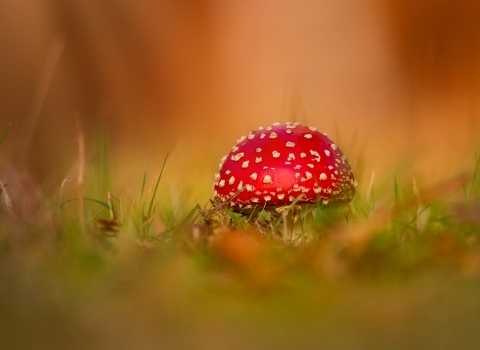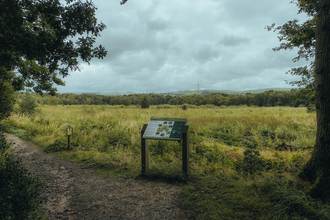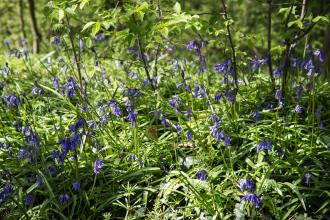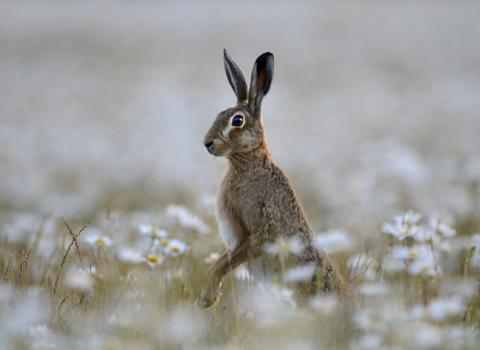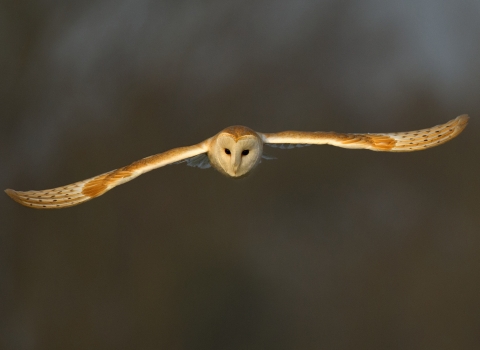What are fungi?
They aren't plants
It’s a common mistake to call fungi plants. Yes, the fruiting bodies (the bit we know from our supermarket aisles) often grow from the ground like a plant might do. However, the truth is, fungi are not related to plants or animals. They’re actually a group of organisms in their own right.
Plants and animals are made up of cells which then form tissue. Fungi have an incredibly unique make-up. They’re built up of microscopic tubular thread-like bodies called hyphae which join to form mycelium rather than tissue.
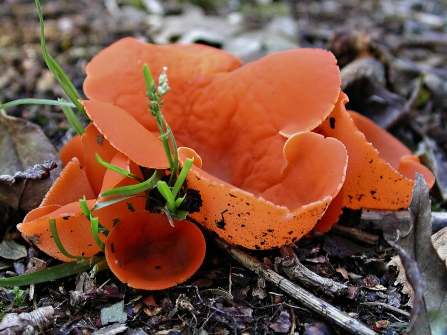
Orange peel fungus c. Les Binns
They are all different sizes, shapes and colours
Chicken of the woods and King Alfred’s cakes, pink ballerinas and scarlet elf cups, blewits and boletes; some are delightfully named, some delicious, and others poisonous. Every habitat is home to a great variety of fungi, and autumn is the best time to explore this little-visited world: you may well be surprised at just how many you come across!
How do they spread?
When a fungus is mature it produces a fruiting body – this is the part we can see when we are out and about. The ones that we most commonly associate with, the traditional ‘mushroom’, house their spores in their gills on their underside. These are then spread by wind and rain to start life in new locations.
But others have some ingenious ways of spreading their spores. Earthballs and puff balls explode, sending their spores out into the atmosphere in an elaborate fashion. Stinkhorns emit a foul smell that attracts flies who help to spread their spores on the insect’s feet.
A word of warning
As beautiful as many fungi are, don’t forget that some are poisonous and even deadly. This makes it especially important to be careful when touching and picking them – even some of the ‘harmless’ ones can cause stomach upsets. We’d only recommend picking to eat them if you are accompanied by an expert and are 100% certain of their identity. Anyhow, by keeping them in situ you’ll be leaving their beauty for someone or something else to enjoy.
Be a fungi detective
Head out on a fungi hunt! Autumn is the perfect time to see as many different fungi species as you can. You can find them almost everywhere, but a good place to start is a woodland where fungi thrives off rotten wood and damp conditions.
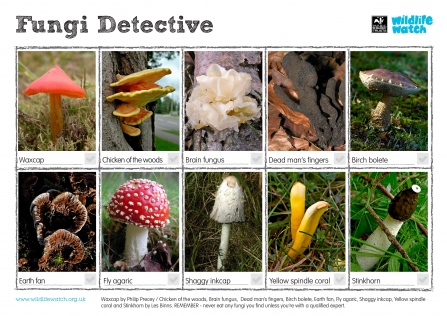
Fungi detective c. Wildlife Watch

